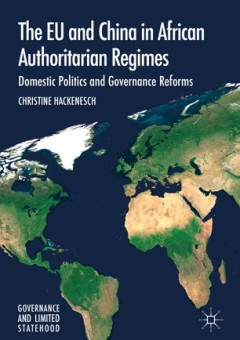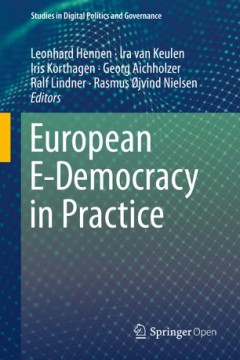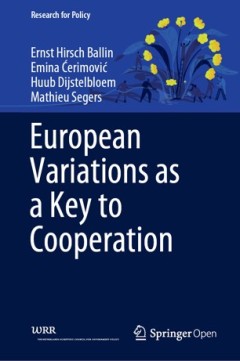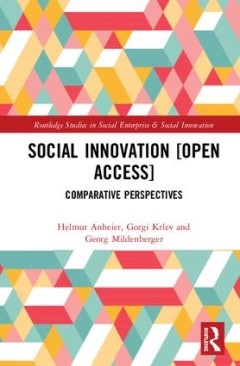Filter by

The ecological scarcity method for the European Union : a Volkswagen research…
This report transfers the Ecological Scarcity Method (ESM) to the EU and its 28 member states. It provides a powerful tool for unbiased environmental assessments in enterprises and surveys the current impacts and the targets published by environmental authorities, specifically the European Environment Agency. ESM assesses environmental impacts of manufacturing sites and production processes. De…
- Edition
- -
- ISBN/ISSN
- 9783658195069
- Collation
- xiv, 93p. : ill.
- Series Title
- -
- Call Number
- 333.714094 AHB e

The EU and China in African authoritarian regimes : domestic politics and gov…
This open access book analyses the domestic politics of African dominant party regimes, most notably African governments’ survival strategies, to explain their variance of opinions and responses towards the reforming policies of the EU. The author discredits the widespread assumption that the growing presence of China in Africa has made the EU’s task of supporting governance reforms difficu…
- Edition
- -
- ISBN/ISSN
- 9783319635910
- Collation
- xvi, 261p. : ill.
- Series Title
- -
- Call Number
- 341.2422096 HAC e

European e-democracy in practice
This open access book explores how digital tools and social media technologies can contribute to better participation and involvement of EU citizens in European politics. By analyzing selected representative e-participation projects at the local, national and European governmental levels, it identifies the preconditions, best practices and shortcomings of e-participation practices in connection…
- Edition
- -
- ISBN/ISSN
- 9783030271848
- Collation
- xi, 359p. : ill.
- Series Title
- -
- Call Number
- 323.042094 EUR e

Transformation of solidarity: changing risks and the future of the Welfare state
This study investigates the consequences of processes of social individualisation and economic globalisation for welfare state solidarity. Solidarity is defined as the willingness to share risks. The institutions of the welfare state, such as social security or health care insurance, are founded on the willingness of citizens to share risks and organize solidarity between the young and the old,…
- Edition
- -
- ISBN/ISSN
- 9789089643834
- Collation
- 214 p. : ill. ; 24 cm.
- Series Title
- Changing welfare states
- Call Number
- 301 VEE t

European variations as a key to cooperation
This Open Access book offers a novel view on the benefits of a lasting variation between the member states in the EU. In order to bring together thirty very different European states and their citizens, the EU will have to offer more scope for variation. Unlike the existing differentiation by means of opt-outs and deviations, variation is not a concession intended to resolve impasses in negotia…
- Edition
- -
- ISBN/ISSN
- 9783030328931
- Collation
- xx, 177p. : ill.
- Series Title
- -
- Call Number
- 337.142 EUR e

Social innovation : comparative perspectives
Social Innovation: Comparative Perspectives investigates socio-economic impact. Since it is hard to establish causality and to measure social properties when investigating impact, especially at the level of society, the book narrows down impact to one priority aspect: social innovation – understood as organizations’ capacity to generate novel ideas, ways and means of doing things, of addres…
- Edition
- -
- ISBN/ISSN
- 9781315158020
- Collation
- xix, 297p. : ill.
- Series Title
- -
- Call Number
- 306.3094 SOC s
 Computer Science, Information & General Works
Computer Science, Information & General Works  Philosophy & Psychology
Philosophy & Psychology  Religion
Religion  Social Sciences
Social Sciences  Language
Language  Pure Science
Pure Science  Applied Sciences
Applied Sciences  Art & Recreation
Art & Recreation  Literature
Literature  History & Geography
History & Geography